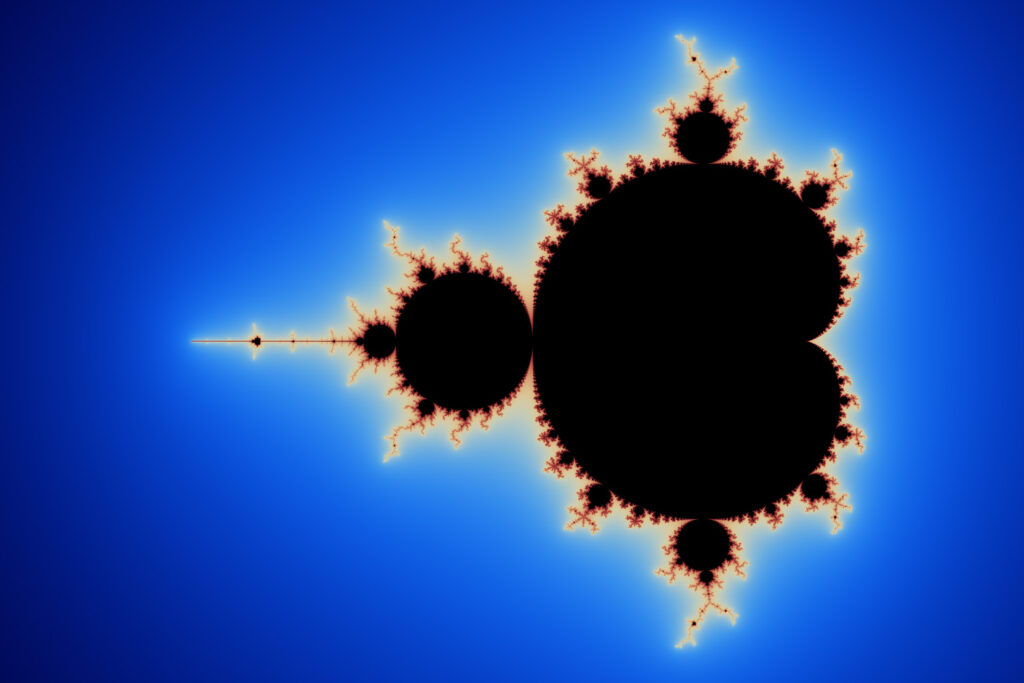
Mathematics is everywhere and this Mandelbrot set is an awesome representation of it.
The Mandelbrot set is one of the most famous fractals in mathematics. It’s named after Benoit Mandelbrot, a mathematician who studied and popularized fractals in the late 20th century. The Mandelbrot set is defined by a simple iterative equation involving complex numbers.
Here’s a basic overview of how it works:
- Complex Numbers: The Mandelbrot set deals with complex numbers, which are numbers that have both a real part and an imaginary part. They’re typically represented as (a + bi), where (a) is the real part, (b) is the imaginary part, and (i) is the imaginary unit ((i^2 = -1)).
- Iterative Equation: The Mandelbrot set is defined by an iterative equation involving complex numbers:
[ z_{n+1} = z_{n}^2 + c ]
Here, (z_n) represents a complex number at iteration (n), and (c) is a constant complex number. The equation is iterated starting from (z_0 = 0). If, after a certain number of iterations, the magnitude of (z_n) exceeds a certain threshold, we assume that the point (c) does not belong to the Mandelbrot set. Otherwise, if (z_n) remains bounded for all iterations, then (c) is considered to be part of the Mandelbrot set.
- Visualization: The Mandelbrot set is usually visualized in the complex plane, with the real part of (c) plotted on the x-axis and the imaginary part of (c) plotted on the y-axis. Points in the complex plane are colored based on whether they belong to the Mandelbrot set or not, and if not, how quickly the magnitude of (z_n) grows.
- Intricate Structure: What makes the Mandelbrot set fascinating is its intricate and infinitely complex structure. Zooming into different regions of the set reveals self-similar patterns at various scales, often referred to as “mini-Mandelbrots.” This property is known as self-similarity and is characteristic of fractals.
The Mandelbrot set has captured the imagination of mathematicians, scientists, and artists alike due to its beauty, complexity, and the endless exploration it offers. It’s not just a mathematical curiosity but also a profound concept with applications in various fields, including chaos theory, dynamical systems, and computer graphics.

